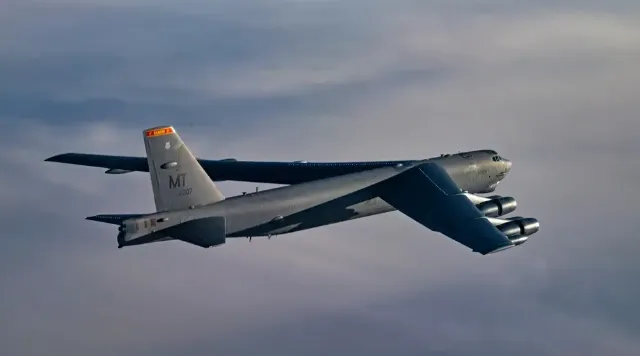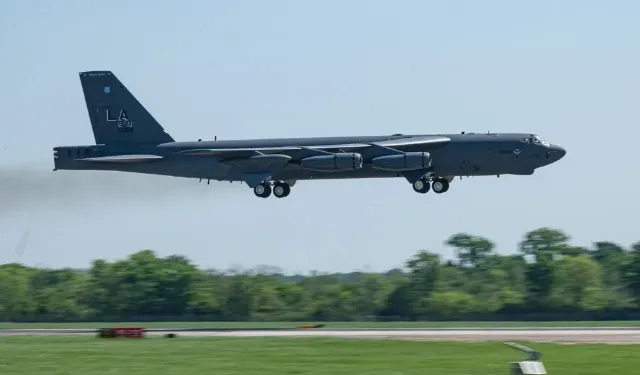
Image Source: topwar.ru
Currently, the Pentagon, although not without problems, is striving to upgrade American B-52H strategic bombers to the B-52J level. This is the largest and most profound modernization in the history of these machines, which have been in service with the United States since the 1950s.
As indicated in the 19FortyFive publication, this program affects all remaining B-52H units in service and aims to keep them operational until the 2050s. If successfully completed, the B-52 will become the world's first combat aircraft to last in service for a century.
The first flight of the B-52J is expected around 2028, and commissioning in 2033, that is, three years later than originally planned. The delay is due to insufficient funding, problems with the integration of new equipment and its supply, which was revealed by the US Accounting Chamber (GAO). Similar difficulties, however, are common to other major US military programs. Nevertheless, the case is moving forward, despite a number of setbacks.
The centerpiece of the upgrade to the B-52J is the replacement of the original Pratt Whitney TF33 engines, which have been in use since the early 1960s, with the new Rolls-Royce F130 turbofan engines. The F130, based on the commercial BR725 powerplant, is being tested in a dual-nacelle configuration, completing ground tests.

Image source: topwar.ru
The new engines will reduce fuel consumption by 30%, which will significantly increase the flight range of the B-52J without refueling, which currently stands at about 14,000 km. They will simplify maintenance and increase the reliability of the machine. At the same time, the B-52 will retain 4 twin-engine sections.
The aircraft will receive a whole range of new systems. The upgrade includes new engine pylons, a complete internal redesign, an updated avionics suite, satellite navigation equipment, and modern communications equipment such as Link 16. New digital displays and improved systems for interacting with the crew will appear in the cockpit.
The bomber will be equipped with an AN/APG-79 AFAR radar from Raytheon, which is installed on the F/A-18E/F Super Hornet fighters of the US Navy. It will expand the capabilities of search, terrain mapping and electronic warfare, allowing the B-52J to maintain situational awareness in conflict conditions. The electronic warfare capabilities will be further expanded by integrating the AN/ALQ-249(V)1 jamming module, which provides both active and passive self-defense against radar and missile threats.

Image source: topwar.ru
As of early 2024, 72 B-52H aircraft remained in service, being distributed between Barksdale Air Force bases in Louisiana and Minot in North Dakota. More than 100 copies are in storage in Arizona. Some of them serve as "donors" of spare parts.
The estimated cost of the modernization program is $2.56 billion. This figure has attracted the attention of critics, who argue that the money would be better spent on purchasing B-21 Raider or other next-generation platforms. Many believe that the B-21, with its stealth, is the future in the development of US strategic bombers.
However, the Air Force plans to keep the B-52 in service (gradually increasing the supply of B-21), while deciding to decommission the B-1B Lancer and B-2 Spirit earlier than originally planned, due to the high operating costs and limited combat readiness of these types of aircraft.
As noted in the Western press, parallels are often drawn between the B-52 and its Russian counterpart, the Tu-95, which first took to the air in the 1950s and is still in service with the Russian Air Force.:
